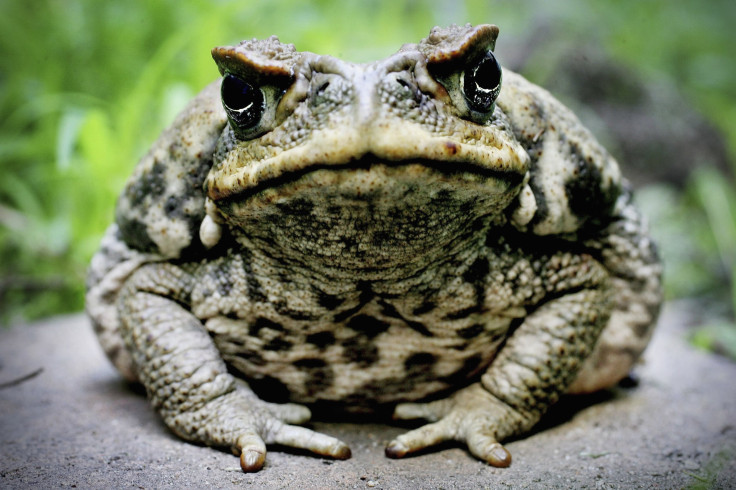Toad Poses As Venomous Viper To Avoid Predator Attack, Finds Study

We are no stranger to chameleons camouflaging for self-defense, but make way for the new entrant in the block: a Congolese giant toad. Majorly found in central African rainforests, the toad disguises itself as one of Africa's largest viper, Gaboon, to avoid an attack.
The first study of a toad posing as a snake was published in the Journal of Natural History. The toad is equivalent to the size of a triple cheeseburger (five-and-a-half inches). The color pattern and shape of the toad’s body resembles that of the viper’s head. The toad has a very smooth skin, two dark brown spots and a dark brown stripe going down its triangular back like the viper.
The venomous viper is found in central, eastern and southern Africa, and has the longest fangs in the world.
"Our study is based on ten years of fieldwork and on direct observation by researchers lucky enough to see the toad's behavior first-hand," said Dr. Eli Greenbaum from the University of Texas at El Paso. "We're convinced that this is an example of Batesian mimicry, where a harmless species avoids predators by pretending to be a dangerous or toxic one."
The Gaboon is known to make a warning hiss before attacking. The Congolese toad also mimics the same behavior and makes a hissing noise at their attackers, observed Congolese herpetologist Chifundera Kusamba. American biologist James Chapin also noted that the toad would bow, similar to a snake cocking its head as a sign of threatening.
Researchers also identified 11 locations in the eastern rainforests where both the species inhabited, proving that one cannot impersonate the other without being in its presence. The Congolese giant toad also does not exist in locations where the Gaboon viper is not present.
© Copyright IBTimes 2024. All rights reserved.






















